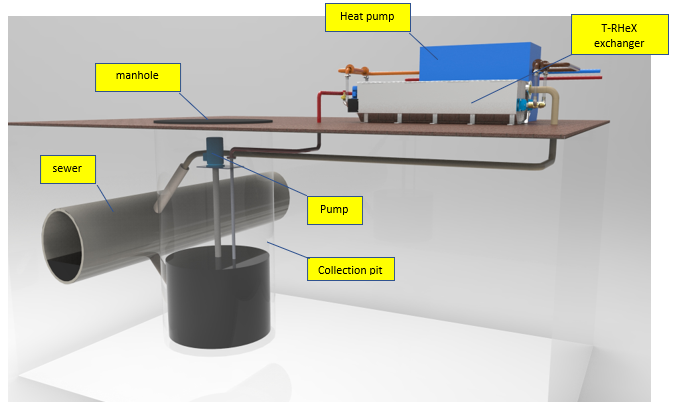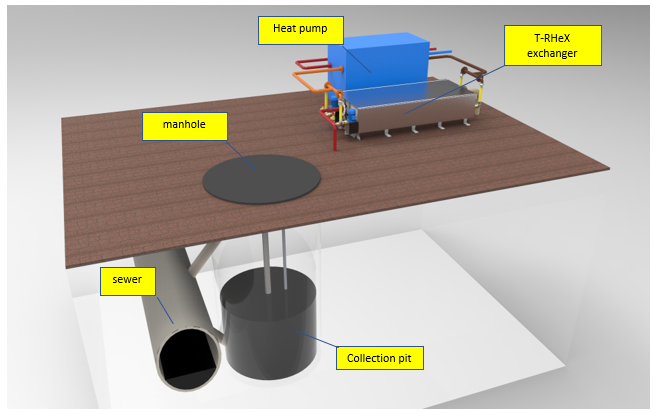Pozzi Leopoldo RCR EOP - heat recovery system
City sewage as a source of energy
Application
- Home /
- application /
- City sewage as a source of energy
CITY SEWAGE AS A SOURCE OF ENERGY
Wastewater (sewage) is a source of energy which can be used for heating and cooling buildings with heat pumps.
The technology is simple and proven. The first plant in this field of application with a large set of our exchangers connected to a heat pump was built more than 20 years ago in cooperation with the Hong Kong energy council.
Recently, enormous progress has been made in the insulation of buildings. In Europe, the demand for thermal energy for new buildings (space heating and hot water) sank by around 10% to 30% compared with 1980's Pictures.
The situation in the case of drains and sewers is different. Although for a conventional new building around 15% of the thermal energy provided to the building is lost, unused, via the sewage system (for a building in low-energy consumption design the amount is up to 30%), virtually no progress has been made in this area.
Wastewater, therefore, offers an ideal basis for the use of heat in winter. In summer, the wastewater temperatures climb to over 20°C. This also allows their use for the generation of cold for air-conditioning.
The sewage fluid is a highly fouling one and the choice of exchanger is, therefore, crucial.
The fouling of the heat exchangers can impair the efficiency of wastewater energy recovery installations to a high degree. RHeX overcomes this problems with its self-cleaning capacity.

The configuration of the plant is simple: after withdrawing sewage by gravity from the sewer into a collection pit, without previously screening or filtering it, we have it pumped through the above-ground T-RHeX exchanger and then return back into the sewer. Since we do not need to screen the sewage, we can produce a compact and cost-effective heat recovery system.
On the secondary circuit of the exchanger, water circulates to the evaporator of the heat pump and returns to the exchanger.

The wastewater heat exchanger takes the heat from the urban sewage and sends it to the evaporator side of the heat pump as a low-grade heat source. The compression heat pump system releases the heat at the condenser side and sends the heat to the heat sink system.
Being simple and compact, typical applications are to be found in small community units like large hospital complexes, campuses, and eventually everywere a consistent flow of sewage can be tapped near to a heat-requiring environment.